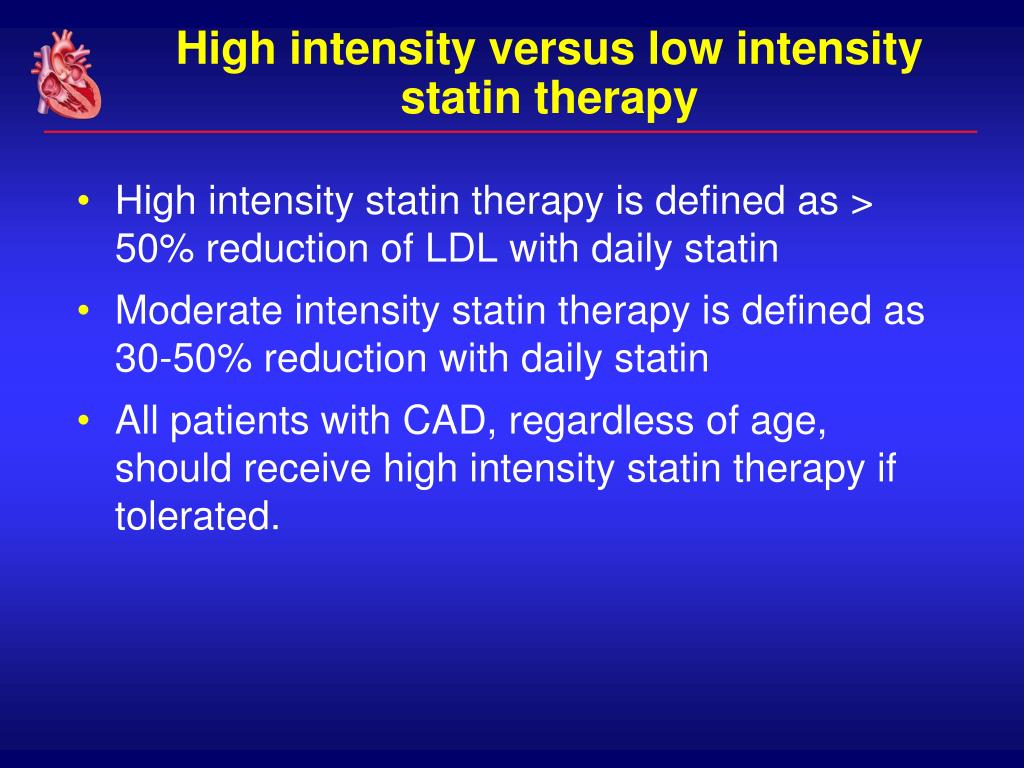

The AHA guidelines provide common statin agents and what classification. Lipitor 10mg represents a moderate intensity statin. Low intensity is an LDL reduction of less than 30, moderate is between 30-49, and high is a 50 or greater reduction in LDL.

A history of muscular symptoms or rhabdomyolysis due to the use of statin.A serum triglyceride on fasting >400 mg/dL In patients older than 75 years of age with clinical ASCVD, it is reasonable to initiate moderate- or high-intensity statin therapy after evaluation of the.Statin therapy is divided into three intensity levels: low-intensity (LI), moderate-intensity (MI) and high-intensity (HI), depending on the statin type and dosage. Patients who have used lipid-lowering agents other than statin or ezetimibe within the last 3 months Statins are the first-choice medication for Dyslipidaemia 7,8,9.More importantly, the 2016 Chinese guideline emphasized that most patients in China do not need and cannot tolerate the high-intensity high-dose statin treatment recommended by ACC/AHA. Diabetes Mellitus (Diabetes Metab J 2017 41:23-30). Patients who have been taking lipid-lowering agents (statin or ezetimibe) for ≥4 weeks at the time of randomization indicated that moderate-intensity statins could result in meaningful reductions in cardiovascular events. Efficacy of Moderate Intensity Statins in the Treatment of Dyslipidemia in Korean Patients with Type 2. Study with Quizlet and memorize flashcards containing terms like Daily dose of LOW intensity statin lowers LDL by approximately:, Daily dose of MODERATE.History of coronary revascularization Stroke or TIA Peripheral arterial disease, history of peripheral arterial revascularization.

Presence of atherosclerotic cardiovascular disease Coronary artery disease the 1-year mortality rate was 4.0 for those taking a high-intensity statin, 4.8 for those taking a moderate-intensity statin (atorvastatin 10-20 mg, fluvastatin 80 mg, lovastatin 40 mg, pitavastatin 2-4 mg, pravastatin 40-80 mg, rosuvastatin 5-10 mg, and simvastatin 20-40 mg), 5.7 for those taking a low-intensity statin, and 6. Assessments should be performed every 3 to 12 months after that, as clinically indicated. Why Should I Register and Submit Results? Statin up-titration was defined as a filled prescription for a high-intensity statin at any time following initiation of statin therapy on moderate-intensity. Moderate-intensity therapy should result in LDL reduction 30 to 50 from baseline, and a high-intensity regimen should result in a reduction of more than 50 from baseline.


 0 kommentar(er)
0 kommentar(er)
